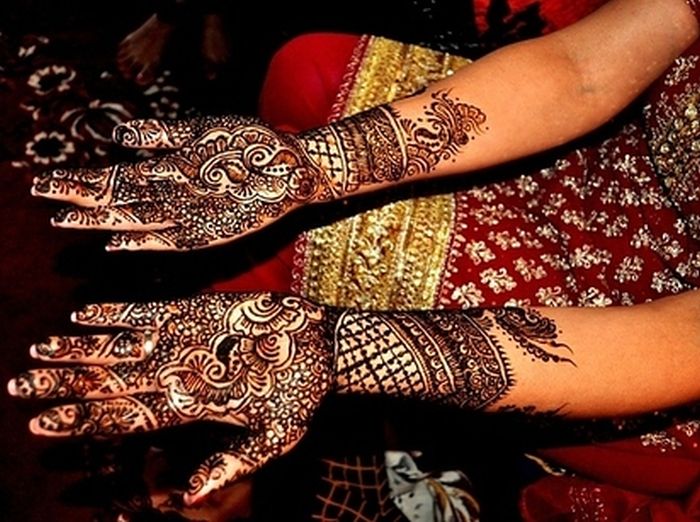|
|
Mehndi Henna Indian Tattoos
|
Mehndi is typically applied during special Hindu weddings and Hindu festivals like Karva Chauth, Vat Purnima, Diwali, Bhai Dooj and Teej. In Hindu festivals, many women have Henna applied to their hands and feet. It is usually drawn on the palms and feet, where the design will be clearest due to contrast with the lighter skin on these surfaces, which naturally contain less of the pigment melanin. Henna was originally used as a form of decoration mainly for Hindu brides. Muslims of Indian subcontinent also apply Mendi during their festivals like Eid-ul-Fitr and Eid-ul-Adha.
In the modern age and even due to limited supply of Indian Traditional Mehndi artists, usually people buy ready-made Henna cones, which are ready to use and make painting easy. However, in rural areas in India, women grind fresh henna leaves on grinding stones with added oil, which though not as refined as professionally prepared henna cones, achieves much darker colors.
The term henna tattoo is figurative, because true tattoos are permanent surgical insertions of pigments underneath the skin, as opposed to pigments resting on the surface as is the case with mehndi.
Likely due to the desire for a "tattoo-black" appearance, many people have started adding the synthetic dye p-Phenylenediamine (PPD) to henna to give it a black colour. PPD is extremely harmful to the skin and can cause severe allergic reactions resulting in permanent injury or death. Alata (Mahur) is a flower-based dye used to paint the feet of the brides in some regions of India. It is still used in Bengal.
|
|









